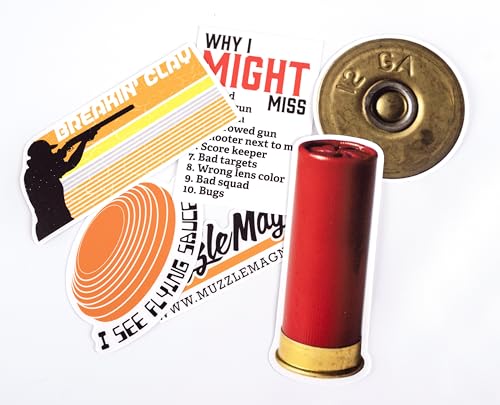Some success, Wonko. I think, based on our videos, many have turned their backs on "target break reading for information about where the pellets that missed the target were centered," or "TBR." The strongest resistance comes, unfortunately, from people who teach others to shoot, both for payment and as youth coaches. I've had more than one refuse to look at the videos on the laptop I carry around, saying "I won't watch them; I know they can't be right."
13-yard POI testing has taken over in the US and pattern-estimation from that distance is gaining traction. It is, after all, the only practical way people can find out if their guns are working as they think they are. (
http://www.claytargettesting.com/POI/Point_of_Impact_and_Pattern_Testing_at_13_Yards.pdf)
Certainly, chronographs and radar guns have taken over target setting, though I wish more setters would read the rulebook which says how to do it. That was a worthwhile, multi-year task. (
http://www.claytargettesting.com/study1/pages/study1a.html) (
http://www.claytargettesting.com/study1/study1.2.pdf) (
http://www.claytargettesting.com/study1/study1.3.pdf)
I cannot make a dent in "60/40", "70/30", "80/20" and so on. Just look at the following NS has developed with the totally nutty "POI testing ez-way" garbage he ruthlessly promotes. it's unimaginable how people fall over them selves in their hurry to tell him how much it has helped them.
The amazing thing is I can't even do it in person. Here's a scene which has played out countless times at Metro over the last 15 years:
Hopeful shooter: "I see you down here at the pattern board all the time; can you help me test the POI of my new shotgun? I'm not sure it shoots straight."
NW: "Sure; let's sit you down here on the stool behind this bench rest and we'll see what's going on. What do you see when you sight down it? "
(15 or 30 minutes later)
NW: OK, that's it. As you see, we've gotten your gun to shoot straight and a little high - call it "an inch or so high" -which is fine while you get used to it. It took some major work to get the shot centered right-to-left and coaxing the comb and rib to work in harmony vertically, but it's under control now and will stay that way as long as you can quit messing with it. Don't lose those notes we took; they will remind you how we got there.
HS: "Is that 80/20? Most of the guys on my league team shoot 80/20."
NW. " The "guys on your league team" are not likely to have any idea where their guns shoot and are just making it up. I won't talk any of that "percent high" mumbo-jumbo. Not a word. Your gun shoots a little high and you have seen it and know it's true. Be satisfied with that; all the rest is nonsense."
HS: "But you would warn me if it's not 80/20, wouldn't you?"
NW" "Stop it! Stop it! Stop it! Your gun shoots a little high and straight and now you know how to change that if you ever need to."
As we walk back to the clubhouse, we meet a member of HS's league team, Bob.
Bob: "Hey, HS, did you finally iron out the POI problem that worried you? Where does it shoot?
HS, "Oh yes, it was pretty-much dialed right in at 80/20 all the time, just like I always thought."
NW: Does anyone have a club?
Yours in Sport,
Jezek
























































